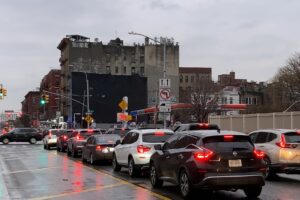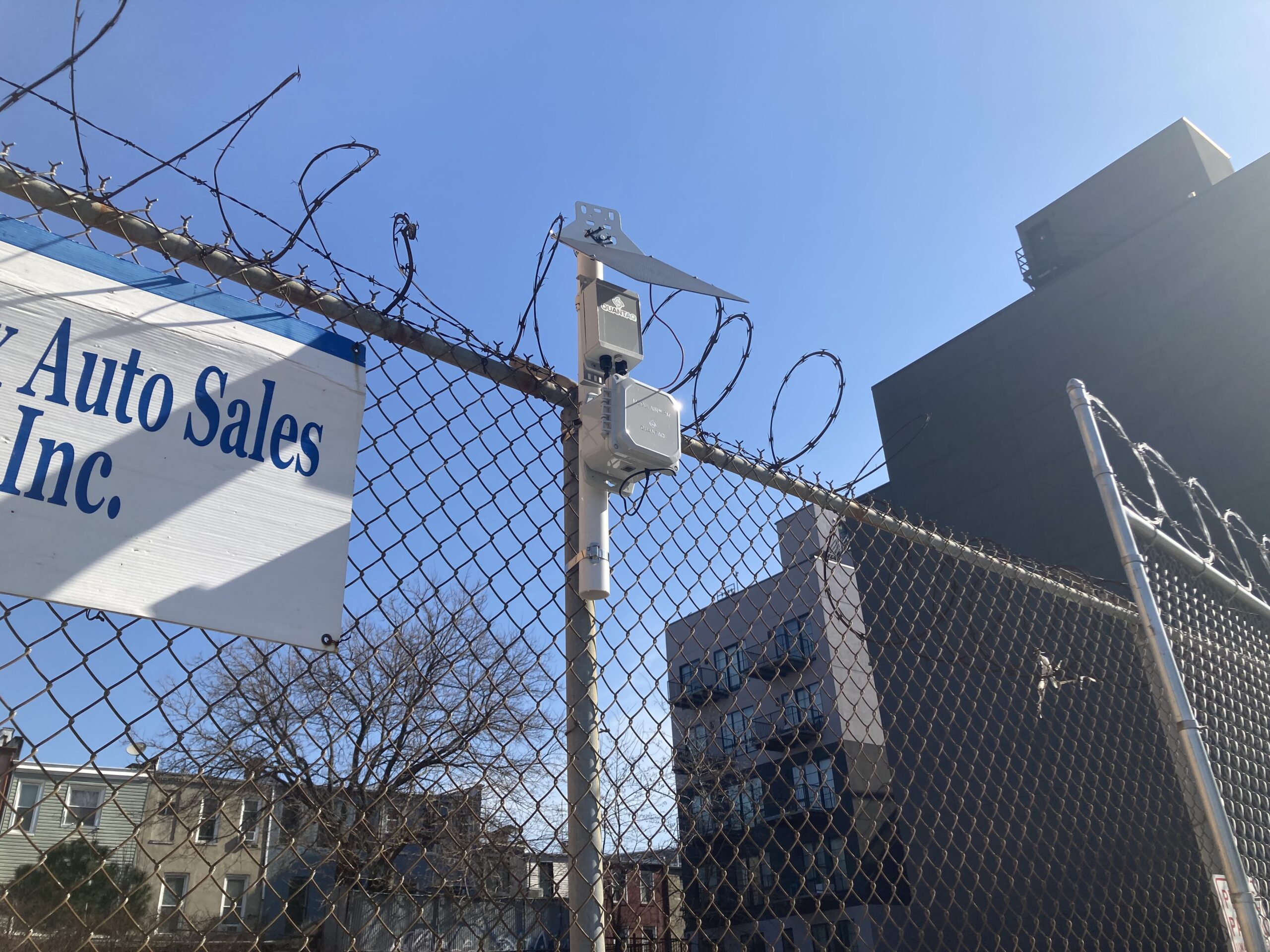A South Bronx environmental group concerned about the potential air pollution impact from congestion pricing has placed 20 air quality monitors around the area – and hopes to add roughly 40 more.
At a recent community meeting, South Bronx Unite shared the initial raw data captured by its air quality monitors and asked for feedback on where to place others. In all, the group hopes to have about 60 air quality monitors around the South Bronx – known as “asthma alley” for its high rates of air pollution – before congestion pricing goes into effect, likely to be this June.
Local environmental group plans to capture air quality data in ‘Asthma Alley’ before and after Manhattan Toll program launches
The group plans to use the air monitor data to compare pollution measurements in the South Bronx before and after congestion pricing. They are concerned that drivers, hoping to avoid the central Manhattan congestion surcharge, will reroute through the Bronx.
The Central Business District Tolling Program, first proposed in 2019 and more commonly known as congestion pricing, will impose a fee on vehicles entering Manhattan anywhere south of 60th Street. The plan excludes motorists on the FDR Drive, the West Side Highway, and the Hugh L. Carey Tunnel connection to the West Side Highway.
Toll rates haven’t been finalized, but the proposed rate for most vehicles—passenger cars, small vans, and pick-up trucks—will be $15 during the day, and $3.75 at night. Trucks and buses will pay a higher toll, depending on their size, while transit buses will be exempt.

The plan is intended to cut traffic and air pollution in Midtown Manhattan, according to city officials – but South Bronx Unite and other community activists are concerned it will have the opposite effect in the South Bronx.
“We can’t afford one single more truck in our community,” said Leslie Vasquez, coordinator of the group’s air monitoring program. “Even just a few vehicles or a few additional traffic on an already burdened and vulnerable community, it does make a huge impact.”
The South Bronx historically has battled air pollution problems. The area is “a 2-square mile community with three highways and five bridges,” with the lowest per capita access to green spaces, the organization said in a 2022 environmental report.
Asthma hospitalization rates in the South Bronx are double those of the other boroughs, according to a 2021 report released by the New York City Department of Health.
For South Bronx resident Rachel Sanchez, a member of the group’s local action committee who lives off the Willis Avenue Bridge, air pollution has meant a house full of air purifiers, which constantly cycle through filters.
“It’s a high traffic area with lots of cars, non-stop, 24/7, every day of the week- holidays, weather, it doesn’t matter,” said Sanchez, who has asthma. “It’s always noisy, it’s always dirty, it’s always greasy, so it’s just an unhealthy area to be in.”
The organization is advocating a push for electric vehicles, specifically trucks, to mitigate the air pollution caused by the increased traffic.
An MTA spokesperson declined to comment. An environmental study on the impact of congestion pricing released by the agency in 2022 found that while there would be traffic diversion through the Bronx, the effects would be minimal.
The study also analyzed the possibility of increased truck traffic through the South Bronx in response to resident concerns. Levels were below national ambient air quality standards at the test site, the study said.
Vasquez said she hopes, for the sake of her community, that the air quality monitor data won’t show an increase in pollution after congestion pricing goes into effect. But experience has taught her to be skeptical.
It’s more likely, she said, the data will show the program “will harm our communities to a much larger extent than reducing traffic in Lower Manhattan.”

